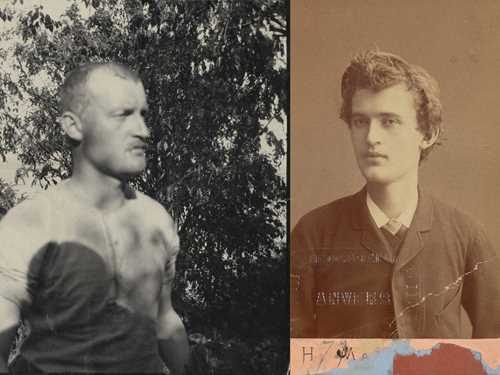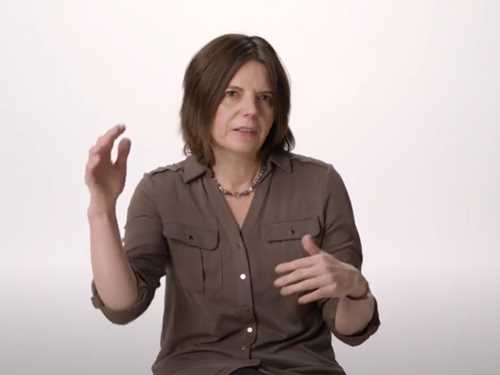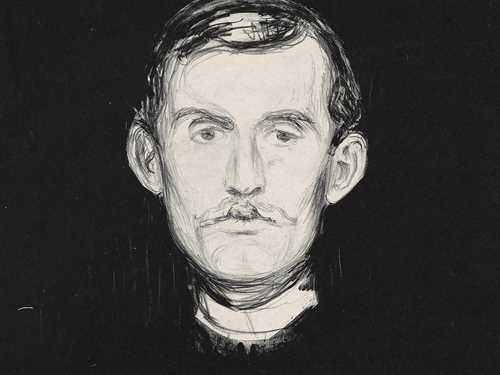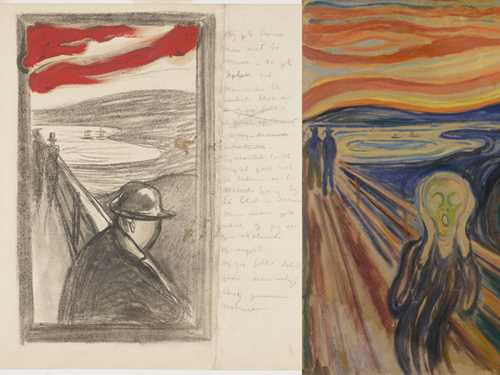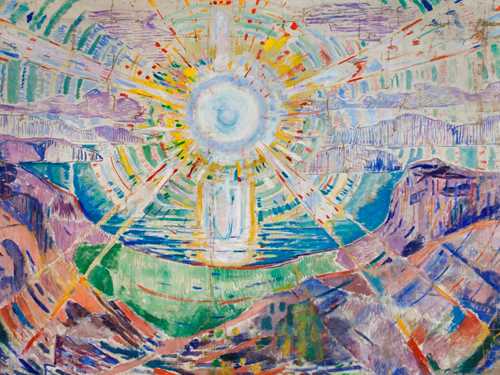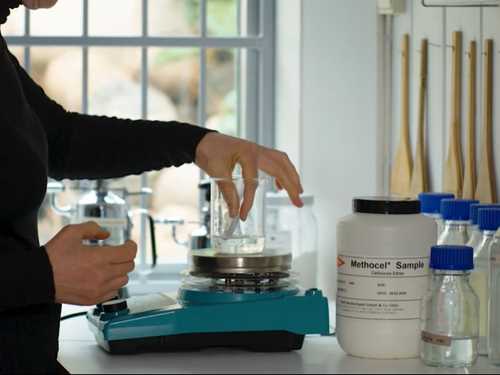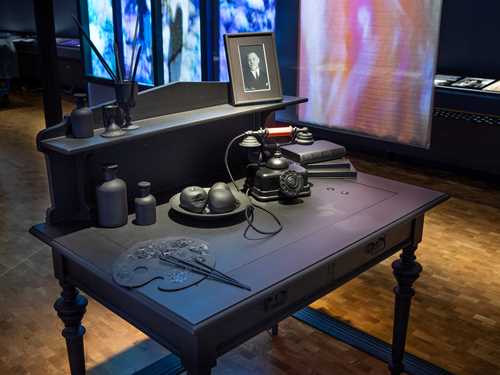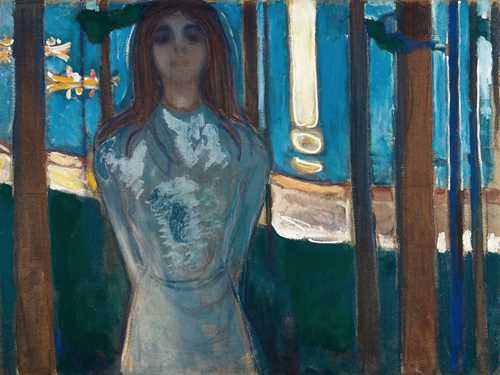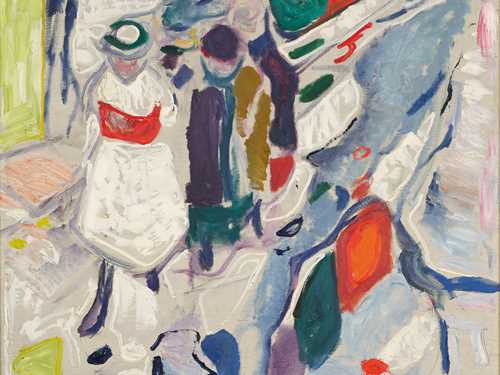Edvard Munch Up Close
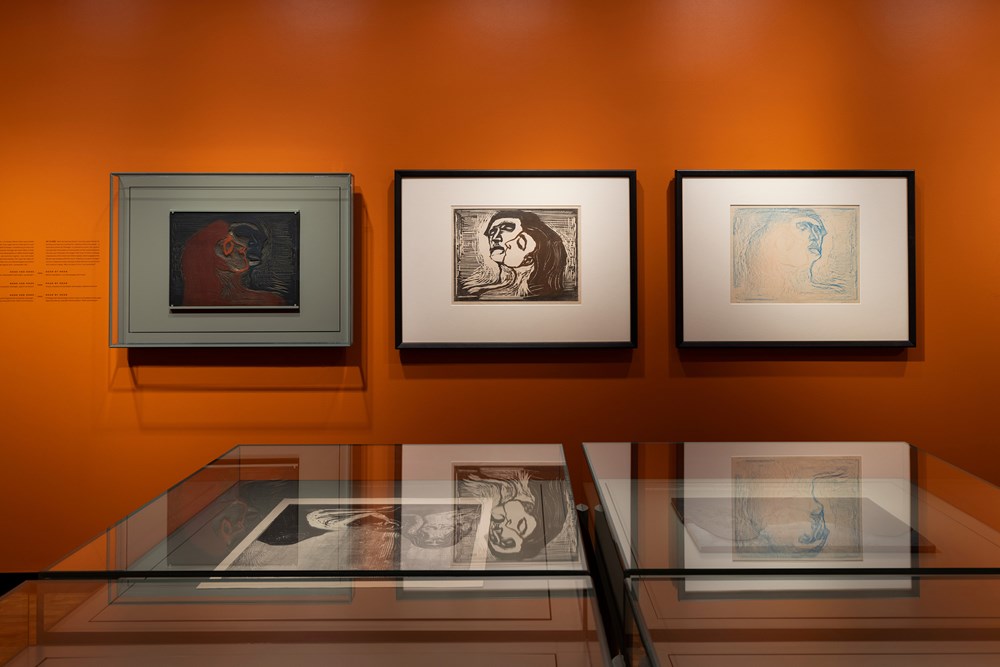
Edvard Munch experimented throughout his life with different techniques and was in his thirties when he first discovered printmaking. As time went on, printmaking became a very important part of his artistic practice. Munch used various printmaking techniques before finally trying his hand at woodcuts, which became the technique that gave him perhaps the greatest freedom for exploration. The process of spontaneous and unpredictable interaction between the artist and his materials – between the organic medium of wood, the paper and the ink – gave rise to some of Munch’s finest works.
The theme of the exhibition is taken from one of the printing plates in the museum’s collection from which we do not have a single surviving print. The plate is titled Encounter in Space and dates from around 1900. It was carved by Munch and then inked up in black, but we don’t know whether any prints were ever made from it. We also don’t know why Munch may have decided to abandon work on this image. Taking this plate as a starting point, we explore Munch’s innovative and surprising techniques through the display of 20 prints that all depict a new encounter between humans. Each impression is exhibited alongside their corresponding printing plate, showing Munch’s enduring artistic influence.
From the exhibition
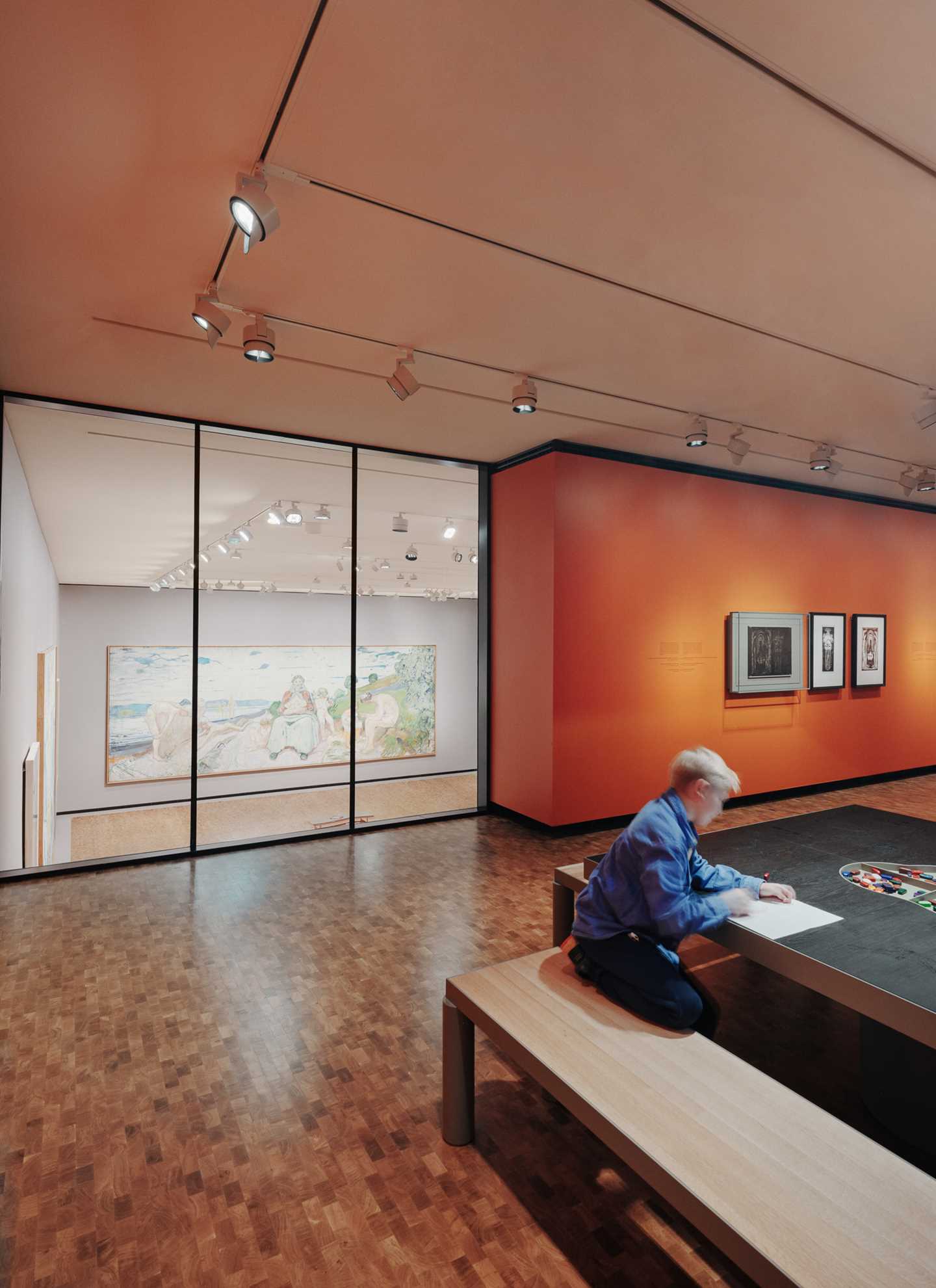
- The exhibition is made by
